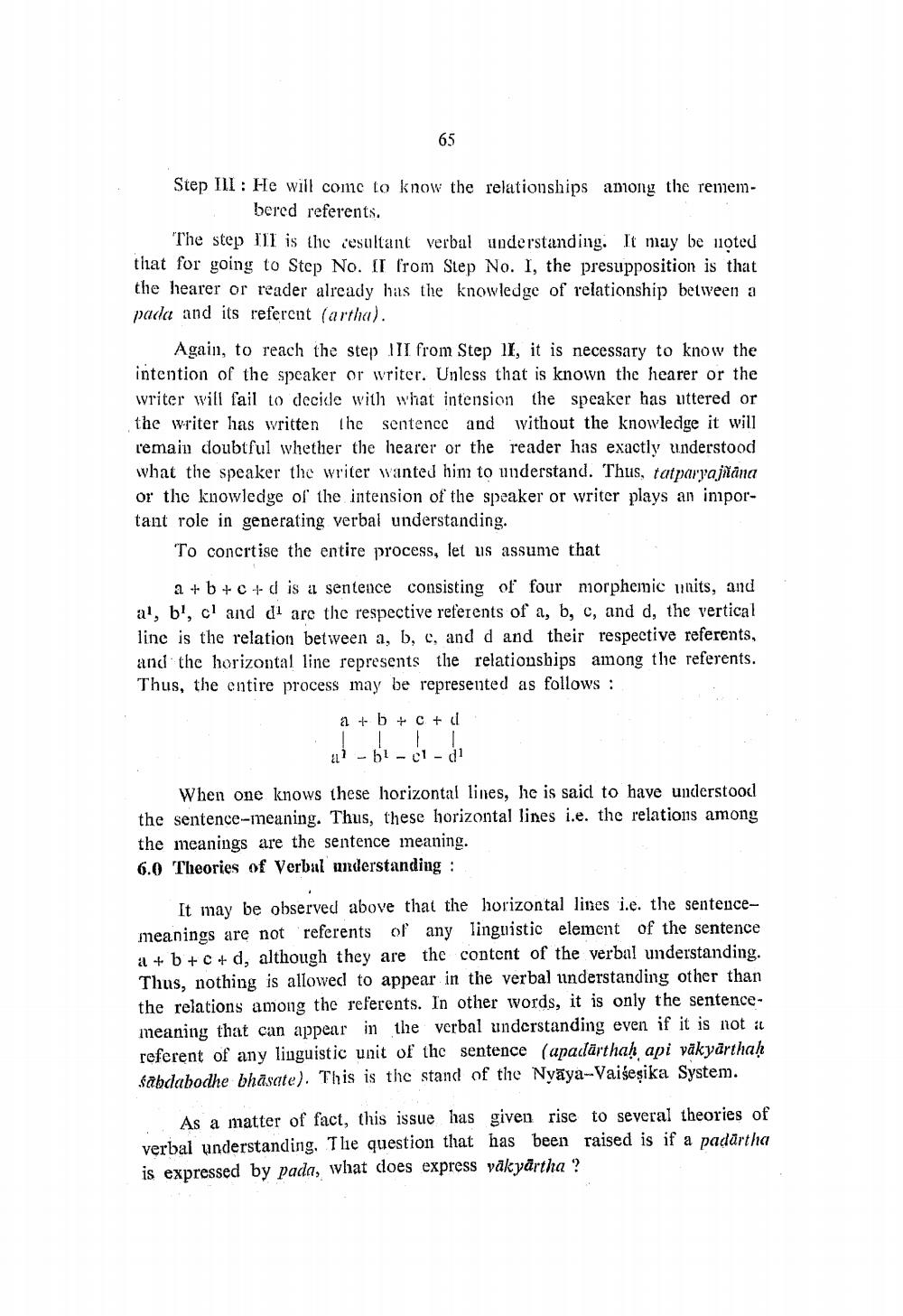________________
65
Step II: He will come to know the relationships among the remem
bered referents. The step 11 is the cesultant verbal understanding. It may be noted tilat for going to Step No. IT from Step No. I, the presupposition is that the hearer or reader already has the knowledge of relationship between a pada and its referent (artha).
Again, to reach the step III from Step II, it is necessary to know the intention of the speaker or writer. Unless that is known the hearer or the writer will fail to decide with what intension the speaker has uttered or the writer has written the sentence and without the knowledge it will l'emain doubtful whether the hearer or the reader has exactly understood what the speaker the writer wanted him to understand. Thus, tatparpañana or the knowledge of the intension of the speaker or writer plays an important role in generating verbal understanding.
To concrtise the entire process, let us assume that
a + b + c d is a sentence consisting of four morphemic units, and a, b', ci and di are the respective referents of a, b, c, and d, the vertical line is the relation between a, b, c, and d and their respective referents, and the horizontal line represents the relationships among the referents. Thus, the entire process may be represented as follows :
a
+ b
+
c + d
al -bl-el-dl
When one knows these horizontal lines, he is said to have understood the sentence-meaning. Thus, these horizontal lines i.e. the relations among the meanings are the sentence meaning. 6.0 Theories of Verbal understanding :
It may be observed above that the horizontal lines i.e. the sentencemeanings are not referents of any linguistic element of the sentence a + b + C + d, although they are the content of the verbal understanding. Thus, nothing is allowed to appear in the verbal understanding other than the relations among the referents. In other words, it is only the sentencemeaning that can appear in the verbal understanding even if it is not it referent of any linguistic unit of the sentence (apadārthah api väkyärthah sabdabodhe bhasate). This is the stand of the Nyāya-Vaigesika System.
As a matter of fact, this issue has given rise to several theories of verbal understanding. Tlie question that has been raised is if a padārtha is expressed by pada, what does express yakyārtha ?




